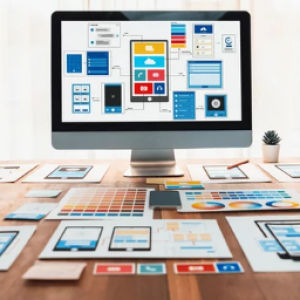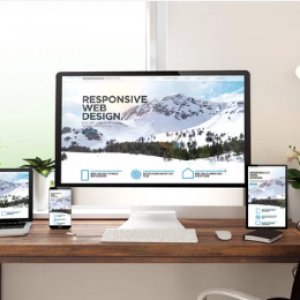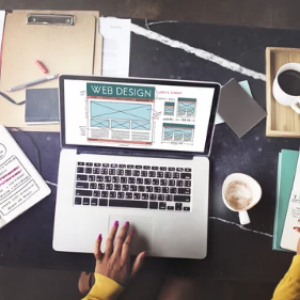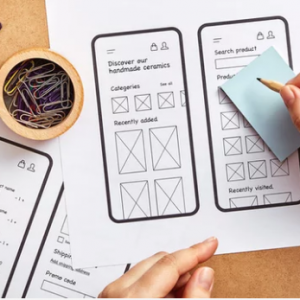Icons are the silent navigators of the digital world. They guide users through a website’s landscape, conveying meaning without words, and enhancing user experience in subtle yet profound ways. Yet, using icons effectively in web design is not as simple as it may seem. The wrong choice can confuse visitors, disrupt flow, or clutter the page. But when used correctly, icons have the power to elevate a website’s visual hierarchy, making content more accessible and intuitive. Understanding the art and science of icon usage is a fundamental skill for any web designer who wants to create a seamless and engaging user journey.
Icons as More Than Decorative Elements
Icons should never be added as mere decorations. Their true value lies in their ability to communicate complex concepts instantly, breaking down barriers of language and culture. A well-placed icon can highlight a call to action, indicate functionality, or offer visual cues that help users navigate through dense information. Web designers need to be strategic in their choice of icons, ensuring that every symbol is not only visually aligned with the overall design but also easily recognizable. For instance, the classic envelope icon has become universally understood as an indicator of messaging or email. Deviating from such conventions can lead to confusion, even frustration, diminishing the user experience rather than enhancing it.
Consistency and Clarity: Pillars of Effective Icon Design
It’s crucial to consider consistency and clarity when incorporating icons into web design. Icons should maintain a uniform style across the site, whether it’s minimalist line art, filled shapes, or bold, colorful graphics. Inconsistency in icon design can disrupt the visual harmony of the website, making it appear unorganized and unprofessional. A skilled web designer knows that every icon, from social media links to navigation arrows, must feel like part of a cohesive visual language that complements the website’s theme. By paying attention to size, color, and spacing, designers ensure that icons contribute to, rather than detract from, the overall aesthetic.
Icons and Accessibility: Making Design Inclusive
Another key consideration is accessibility. Icons can greatly enhance usability for all visitors, but they must be deployed thoughtfully to benefit everyone, including those with visual impairments. A web designer should always pair icons with descriptive text or alt tags to ensure that their meaning is conveyed even when the visual element is not visible. This combination of text and imagery serves multiple purposes, boosting SEO while providing a richer experience for screen reader users. It’s this kind of meticulous attention to detail that transforms a good web design into an exceptional one—where every user feels catered to and understood.
Guiding User Interaction Through Placement and Design
The placement of icons within a page’s layout is equally significant. When used to highlight interactive elements, such as buttons or links, icons can draw attention to actions you want users to take. Consider the impact of an icon placed next to a “Download” button: the visual cue reinforces the action, making it stand out amidst a sea of text. In web design, it’s often the smallest elements that have the biggest influence on user behavior. A seasoned web designer recognizes this and utilizes icons to create a visual rhythm that subtly guides users through the content.
Enhancing Readability and Visual Flow
Icons also help break up long sections of text, making content more digestible and engaging. By creating visual anchors, they allow the reader’s eye to rest and refocus. This is particularly useful for websites that need to present detailed information, such as technical specifications or service descriptions. Rather than overwhelming the audience with walls of text, a web designer can use icons to punctuate content, improving readability and retention. Each icon, like a period in a sentence, marks a natural pause, giving the user time to absorb what they’ve read before moving on.
Mastering the Balance: How Much Is Too Much?
However, effective icon use is not about scattering them haphazardly across the page. It requires a deep understanding of user psychology and behavior. A skilled web designer Singapore knows when to use icons sparingly and when to let them take center stage. Overuse can dilute their impact, while underuse can make a site feel sterile and uninviting. Striking the right balance is crucial, and that balance depends on the specific needs and goals of each website.
Conclusion: Crafting a Seamless User Experience
In a fast-paced digital world where attention spans are dwindling, icons can be a web designer’s most powerful tool for communication. They distill complex ideas into simple visual forms, bridge language gaps, and direct users effortlessly through digital spaces. But, like any tool, their power is harnessed only through skillful use. To truly leverage the potential of icons in web design, one must approach them not as mere embellishments, but as integral elements of a visual language that speaks to users in a way that words alone cannot.
In the end, effective icon usage is about making design choices that resonate with users. It’s about ensuring that every click, every scroll, and every interaction feels intuitive and rewarding. By understanding the nuances of icon design and placement, a web designer can craft websites that are not only visually stunning but also functionally flawless—creating digital experiences that are as clear and compelling as they are beautiful.









